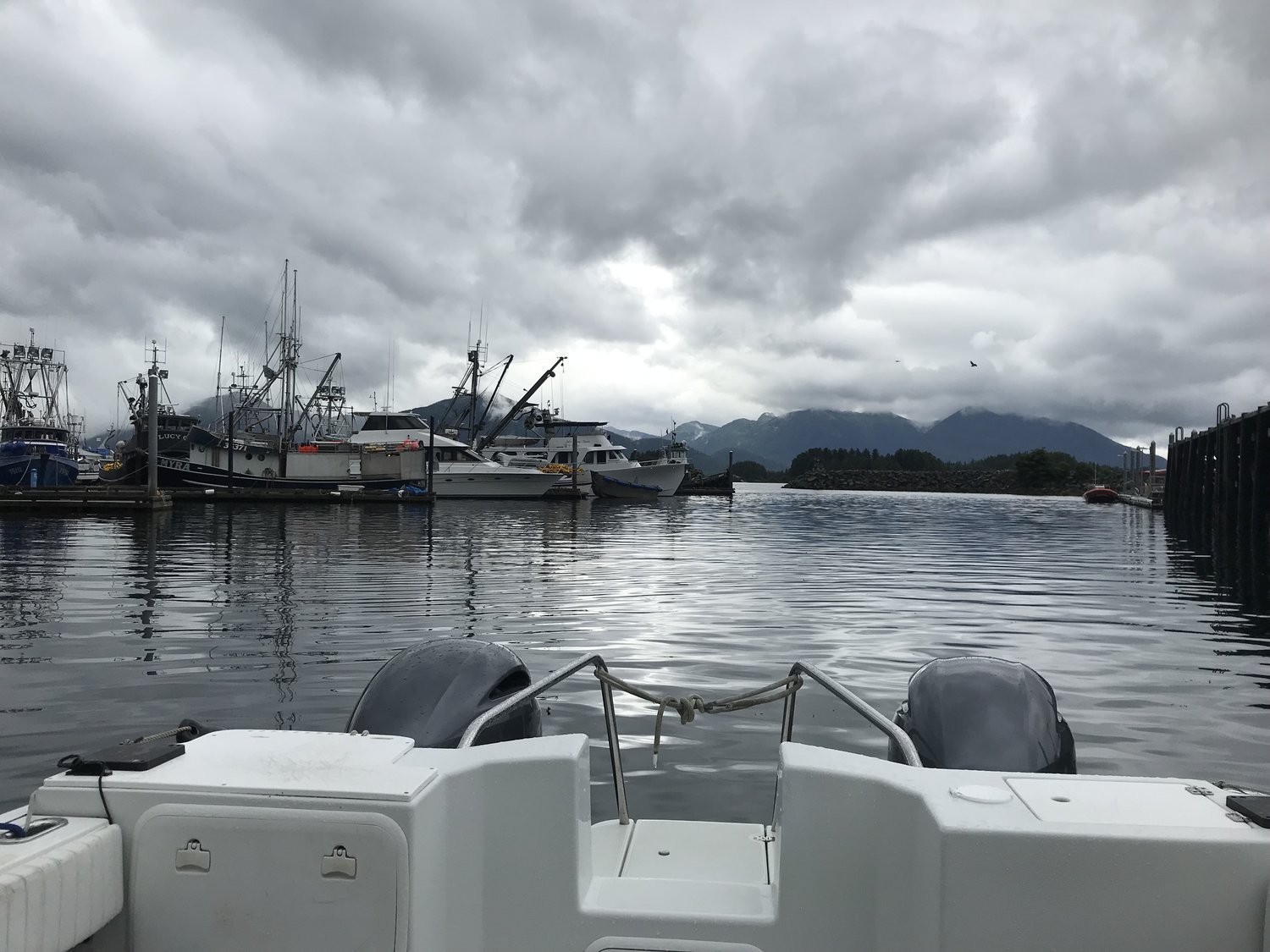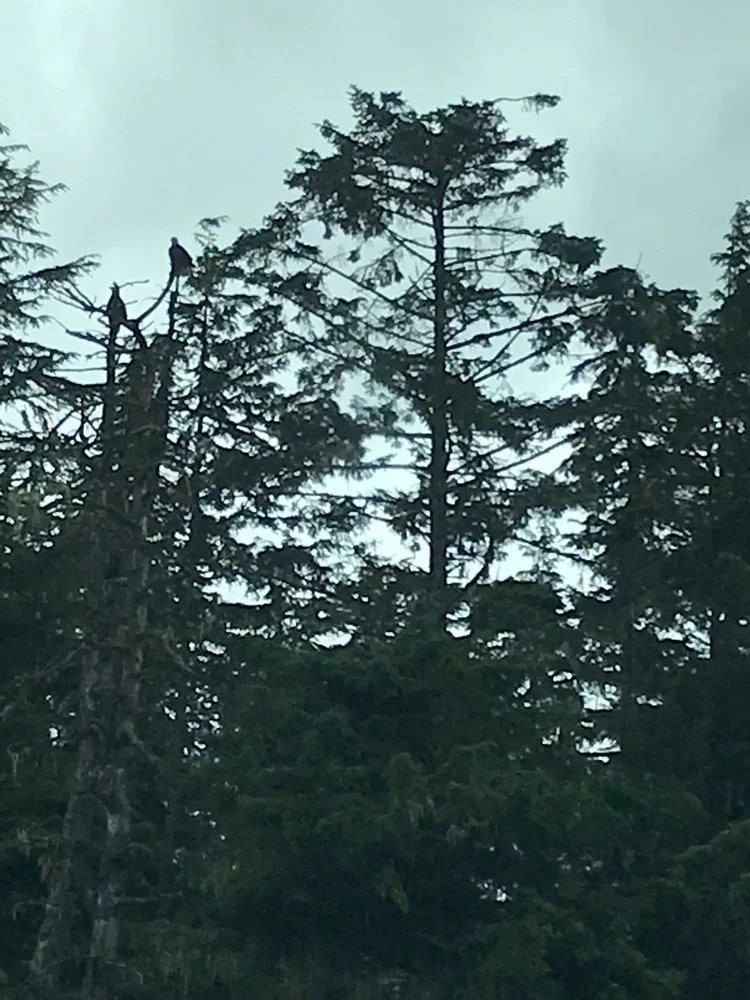Cruise Edition: Sitka, Alaska
In August of 2018, I took an Alaskan cruise to celebrate my 40th birthday. I chose Holland America as my cruise line, which took me to many ports, including Sitka (for a review of each port, click here).
Below is my experience however, not everyone may enjoy what I did. At the end of this post, I’ve included alternative options of things to do. Note, you can book these independent of your cruise line as they understand most are arriving for day trips.
about Sitka
1799 - Russian explorers settled Old Sitka, naming it “Fort of Archangel Michael”. The governor of Russian America, Alexander Baranov, arrived under the auspices of the Russian-American Company, a colonial trading company chartered by Tsar Paul I.
June 1802 - Tlingit warriors destroyed the original settlement, killing many of the Russians, with only a few managing to escape. Baranov was forced to levy 10,000 rubles in ransom for the safe return of the surviving settlers.
August 1804 - Baranov returned to Sitka with a large force, including the ship, Neva, which bombarded the Tlingit fortification, but was unable to cause significant damage. The Russians then launched an attack on the fort and were repelled. Following two days of bombardment, the Tlingit surrendered on August 22nd, deserting the fort on the 26th.
1808 - With Baranov still governor, Sitka was designated the capital of Russian America.
1840 - Bishop Innocent lived in Sitka and was known for his interest in education. His house, the “Russian Bishop's House”, served both as living quarters, as well as a schoolhouse. It is now part of the Sitka National Historical Park.
1840 - The Sitka Lutheran Church building was built, and was the first Protestant church on the Pacific coast.
1848 - 1966 - The original Cathedral of Saint Michael was built in Sitka and became the seat of the Russian Orthodox bishop of Kamchatka, the Kurile and Aleutian Islands, and Alaska. The original church burned to the ground in 1966, losing its handmade bells, the large icon of the Last Supper that decorated the top of the royal doors, and the clock in the bell tower. Also lost was the large library containing books in the Russian, Tlingit, and Aleut languages.
1856 - Russia was going through economic and political turmoil after it lost the Crimean War to Britain, France, and the Ottoman Empire.
1867 - Sitka was the site of the transfer ceremony for the U.S. Alaska purchase on October 18, 1867. Post the Crimean War, Russia decided to sell Alaska before British Canadians tried to conquer the territory. The cost to purchase Alaska was $7.2 million (2 cents per acre).
1867 - 1884 - Sitka served as the U.S. Government Capital of the Department of Alaska.
1884 - 1906 - Sitka served as the District of Alaska.
1912 - The Alaska Native Brotherhood was founded in Sitka to address racism against Alaska Native people in Alaska.
1914 - The organization had constructed the Alaska Native Brotherhood Hall on Katlian Street, which was named after a Tlingit war chief in the early period of Russian colonization.
1929 - Sitka's Filipino community established itself
1937 - The United States Navy established the first seaplane base in Alaska on Japonski Island, across the Sitka Channel from the town.
1941 - Construction began on Fort Ray, an army garrison to protect the naval air station. Both the army and navy remained in Sitka until the end of WWII, when the army base was put into caretaker status.
1944 - The naval station in Sitka was deactivated.
1944 - 1972 - A shore boat system was established to transfer approximately 1,000 passengers a day until the O'Connell Bridge was built in 1972.
1959 - 1993 - The Alaska Pulp Corporation was the first Japanese investment in the United States after WWII - it began to produce pulp harvested from the Tongass National Forest under a 50-year contract with the US Forest Service. The mill employed around 450 people before closing in 1993.
Today - Tourism and fishing are the main sources of economic stability for the city.
Getting to your excursion
My adventure started by the cruise ship docking at Baranof Island (named for their first Russian Governor) in Old Sitka. To get to dry land, you have to navigate through a long series of ramps to get to the free city shuttles, to take you to the newer, more modern downtown area. Once I was there, and because I booked my excursion independently, I looked for "Sitka Wildlife Tours", which is owned an operated by a wonderful married couple, Bill and Rhonda.
Excursion pt. 1 - The boat ride
The first part of my excursion was on a small twin-engine boat, in Sitka Bay, to see the whales dive, Eagles nests perched at the tops of tall trees, sea lions swimming, and sea otters hanging out on kelp beds. Given that we had had a rough night/day at sea, I wasn’t sure how far we'd get out of the bay before we had to go back in. However, our captain, who is full Tlingit (pronounced klinkit), was really incredible at not only navigating how rough it got, but also giving us a lot of knowledge of Sitka, his ancestral history (which dates back 10,000 years), as well as all of the wildlife we'd see.
While I missed being able to capture the humpback whale dive on camera (which was amazing to see it in person), I did capture pictures of a massive Eagles' nest with two Eagles perched at the top, lots of sea lions, and from further away, a family of sea otters.
Sitka by van
When we pulled back into the marina we were then guided to our waiting van, with our Guide, Marie, to take us all around Sitka.
On our way to our first stop, we learned some interesting facts about Sitka:
Castle Hill was the place where Alaska was purchased from the Russians for $7.2 million - it's now just an open spot on a hill with a commemorative plaque.
University of Alaska Southeast's buildings are repurposed old seaplane hangers.
There's a boarding school that holds 200 children from some of the most remote parts of Alaska. It's hard to believe, but some of these children are in such remote areas that they don't have electricity or running water, and believe Sitka is a major city.
These same children don't want to go back to their very rural homes in the summer, which means a lot of the local Sitka inhabitants take them in during the summer.
Sitka also has an alternative high school for those that are required to be on the water during fishing season, or are looking to graduate high school early.
Fortress of the Bear
Fortress of the Bear is a bear sanctuary for rescued/abandoned cubs that have to be raised outside of the wild. The owner, Les Kinnear, used to be a bear hunter until he saw what was happening to the orphaned cubs. He stopped hunting and began his journey to building a sanctuary for these bears.
Les' work has become not only incredibly important to Sitka, but to the rest of the state and other states as well. $10 of each tour ticket goes right back to taking care of these amazing animals, which are continuing to get bigger and bigger digs! Some fun facts about this sanctuary:
Fisheries will donate live salmon. Les puts an oxygen tank in the back of his pickup truck to keep the salmon alive as he transports.
He locks the bears in one part of the sanctuary, stocks the pond they love playing in, and lets them loose to catch the fish.
The female brown bear gets "sassy" with the men, and tends to need her own enclosure.
The bears have the ability to make their own dens on the property to be able to hibernate in the winter.
Sitka Historical National Park (or Totem Park)
While it was super rainy, it was a beautiful walk through Sitka's rain forest to learn more about the local vegetation, the salmon hatchery, as well as the history of the totem poles the Tlingit people made.
The most fascinating bit of information I got from this part of the tour was on the saying, "lowest person on the totem pole" - it's actually an inaccurate saying, as that person is considered one of the most important! Why? Because they often carry the heaviest load.
sitka experiences to book
If you aren’t a fan of my above excursion or need options for this one as well, I’ve included a complete list of things to do that you can book straight away. Note that all companies understand you are on a cruise and that time is limited.
Why book independently? Because cruise lines mark up excursions for profit. Booking separately means lower cost and sometimes, better experiences.
Sitka Scenic Tour
Skip the impersonal, large-group bus tour and explore Sitka on a small-group day trip to the city’s top landmarks, with a range of departure times offered to fit your schedule. Your guide, who navigates for you, brings you to four highly-rated attractions, including Fortress of the Bear, the Alaska Raptor Center, and the Sitka National Historic Park. All entrance fees are included for your convenience.
TONGASS NATIONAL FOREST Guided hike
See eagles, pick edible berries, spot salmon, learn from your local guide about life in Sitka, and hike safely in America’s largest National Forest! Snacks are provided.
Whale-Watching and Marine Life Tour
Soak up gorgeous landscapes aboard a smooth-sailing 26-foot Glacier Bay catamaran on this whale-watching shore excursion from Sitka. For two hours, a seasoned captain takes a small group limited to just six passengers to prime spots to watch for humpbacks, gray whales, porpoises, seals and an array of birds. Learn about the marine life you see, and return to your ship with memorable shots of wildlife in action.
Whale Watching and Wildlife Shore Excursion in Sitka
Experience Amazing Wildlife with a born and raised Sitkan! This personal tour will guide you through the breathtaking beauty of Southeast Alaska , teaming with migrating humpback whales, harbor seals, Steller sea lions, rafts of sea otters, lumbering brown bears, and perched bald eagles. We offer a back to ship guarantee, so you'll never miss your ship! This tour is great for families, Couples, and wildlife photography.



















